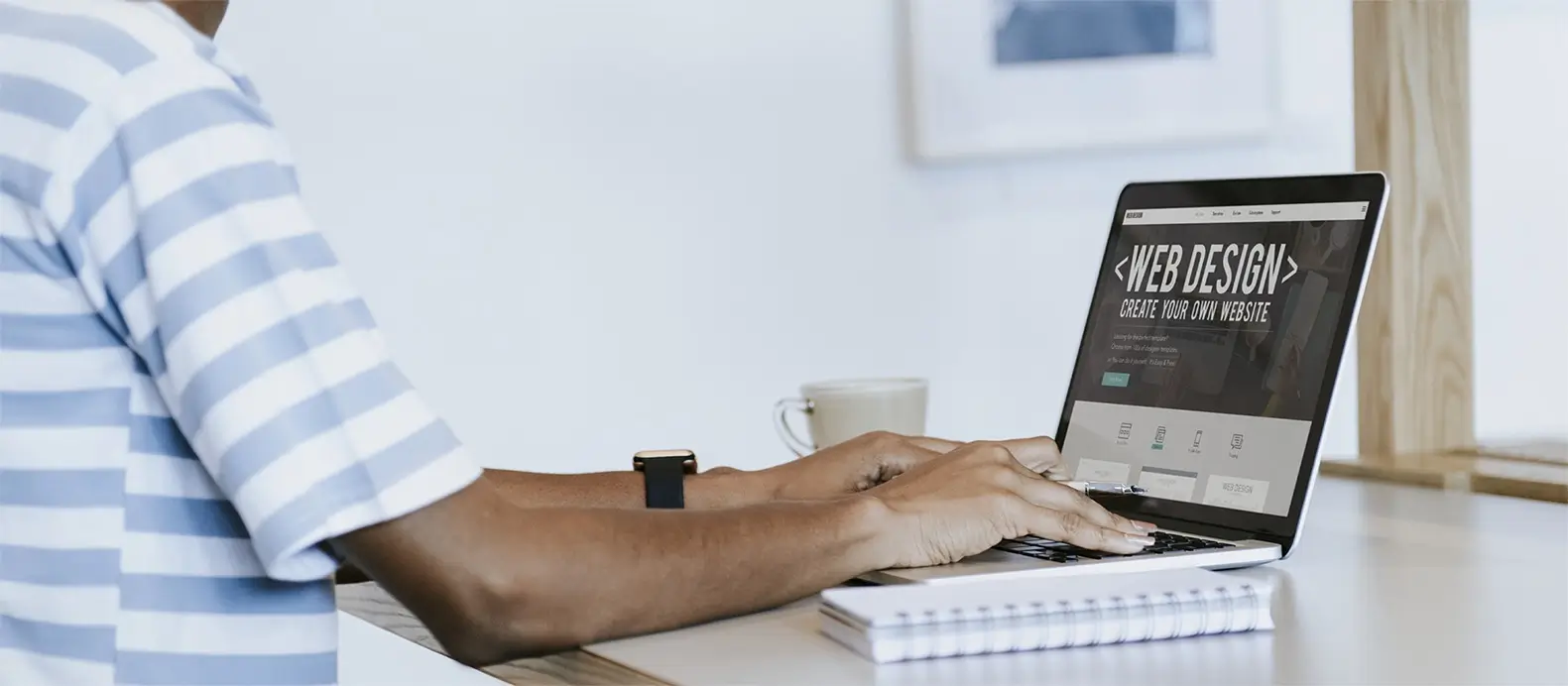Exploring Gutenberg block styles and WordPress block themes
Try MaxiBlocks for free with 500+ library assets including basic templates. No account required. Free WordPress page builder, theme and updates included.

Gutenberg block styles are preset visual options that let you change the look of individual blocks in the WordPress editor. You can apply styles like rounded corners or drop shadows without writing any CSS. WordPress block themes are themes built entirely with blocks, allowing you to design every part of your website, including headers, footers and templates, directly in the editor.
Introduction
Gutenberg has transformed the way websites are built on WordPress. As a block-based editing system introduced in WordPress 5.0, Gutenberg replaces the traditional content editor with a more flexible and visual approach. Instead of working in a single text box, you now create content using blocks each block representing a different element, such as text, images, buttons, or videos.
This modular structure allows for better design control, especially when paired with WordPress block themes that support full site editing. With design consistency and layout flexibility more important than ever in modern web development, mastering Gutenberg’s tools can make a big difference in both speed and quality.
In this article, we’ll explore what Gutenberg block styles are, how WordPress block themes support them, and how you can use both to create beautiful, responsive websites with ease. Whether you’re a beginner or a seasoned designer, understanding how these tools work together can streamline your workflow and elevate your design game.
What are Gutenberg block styles
Gutenberg block styles are predefined visual appearances that can be applied to specific blocks within the WordPress editor. They allow you to quickly change the look of a block without affecting its structure or content.
Each block in Gutenberg may offer one or more style variations. For example, a button block might offer options like solid, outline, or pill-shaped designs. These style options help maintain consistency across your site while giving you flexibility to customise the appearance of individual elements.
Gutenberg also allows developers and designers to register custom block styles using code, making it possible to match your brand’s visual identity or create reusable design systems. Paired with tools like MaxiBlocks, these styles become even easier to manage and apply site-wide.

What are WordPress block themes
WordPress block themes are modern themes designed specifically for the Gutenberg editor and full site editing. Instead of relying on traditional PHP templates, block themes use blocks to build every part of a website. This approach offers greater flexibility and customisation, allowing you to control layouts, headers, footers, and more directly from the editor.
Block themes use a theme.json file to define global styles such as typography, colour palettes, and spacing, ensuring design consistency across your site. They also integrate seamlessly with reusable blocks, block patterns, and custom block styles, making it easier to build and update pages without writing code.
By embracing block themes, you gain full control over your site’s design, resulting in a more dynamic and modern web presence.
Build like a pro
Benefits of using block themes in WordPress
Block themes bring a number of advantages to modern WordPress website design:
Full site editing
You can edit every part of your website headers, footers, sidebars, and templates directly within the block editor. No need to touch code or switch between different tools.
Consistent styling
With global styles managed via the theme.json file, you can maintain a unified look across your entire site. This makes it easier to apply brand colours, typography, and spacing rules throughout every page.
Improved design flexibility
Block themes are built to work with blocks, giving you more control over layout and design without relying on custom templates or extra plugins.
Ease of customisation
You can create or modify layouts using block patterns, reusable blocks, and the Gutenberg editor all visually, without developer input.
Better performance
Many block themes are lightweight and built for speed, often reducing the need for bloated page builders and large plugin stacks.

Gutenberg block styles explained
What are Gutenberg block styles?
Gutenberg block styles are pre-defined visual variations for existing WordPress blocks. They allow you to apply different designs or layouts to a block such as changing its appearance, borders, colors, or alignment without creating a new block from scratch.
Why are block styles useful?
They give content creators and designers more flexibility without needing to write custom CSS. With just a click, you can transform a button, list, image, or any supported block into a style that fits your site’s design.
Examples of commonly styled blocks:
- Buttons – Rounded vs. square, solid vs. outline
- Lists – Icons instead of bullets
- Images – Circular masks, shadow effects
- Quotes – Pullquote vs. classic styling
How to access and apply block styles:
When you click on a block in the Gutenberg editor, the Style options appear in the sidebar or toolbar. You can switch between the available styles there.
How Gutenberg block styles and WordPress block themes work together
Block themes explained
Block themes are WordPress themes built specifically for the Gutenberg editor. Unlike classic themes, they’re designed to take full advantage of Full Site Editing (FSE), allowing you to edit headers, footers, templates, and more all using blocks.
How block styles enhance block themes
Block themes often include custom block styles that match the overall aesthetic of the theme. These styles help maintain visual consistency while still giving users the flexibility to adjust designs to their liking.
Benefits of combining both:
- Consistency – Block styles ensure design cohesion across reusable blocks and templates
- Speed – Quickly apply pre-styled elements without writing custom CSS
- Creativity – Easily experiment with different looks inside a consistent layout framework
Example use case
Say you’re using a block theme for a portfolio. You could apply a “minimal” image style to all your project thumbnails and a “highlighted” quote style for testimonials all styled by your theme.
Subscribe to our newsletter
Best practices for using Gutenberg block styles and WordPress block themes
Start with a block theme
Choose a theme that’s built specifically for full site editing and Gutenberg. This ensures compatibility and gives you access to block templates, global styles, and more.
Use block styles for consistency
Apply predefined block styles to elements like buttons, images, or quotes to keep your design cohesive without manually styling each block.
Customise global styles
Take advantage of the global styles panel (found in the site editor) to set your site’s fonts, colours, and spacing. This reduces the need for custom CSS and helps maintain visual consistency.
Leverage block patterns and reusable blocks
Save time by using or creating block patterns for common layouts like calls to action, testimonials, or hero sections. Reusable blocks help keep repeated content uniform and easy to update.
Test responsiveness and accessibility
Make sure your custom styles and layouts look good on mobile and are accessible to all users. This includes checking colour contrast, heading structure, and button clarity.
How to customise Gutenberg block styles
Use the block settings panel
Each block includes styling options like typography, colour, padding, and border settings. Use these built-in tools to quickly adjust the appearance without custom code.
Create custom block styles
You can register new block styles using the registerBlockStyle function in your theme’s functions.php file. This allows you to offer additional style variations for any core block.
Apply custom CSS
For more advanced customisation, add CSS classes through the block’s advanced panel and style them in your theme’s stylesheet or via the customiser’s additional CSS section.
Use global styles in theme.json
The theme.json file lets you define global settings for fonts, colours, layout spacing, and block-specific styles. This keeps your styling consistent and easier to maintain across your site.
Test and refine your styles
After applying your custom styles, preview them on different devices and screen sizes. Make adjustments to ensure your site looks polished and performs well everywhere.
Final thoughts
Exploring Gutenberg block styles and WordPress block themes gives you the power to design modern, flexible, and visually consistent websites without needing complex code. By combining built-in styling tools, custom CSS, and global styles from theme.json, you can create a polished site that reflects your brand and delivers a seamless user experience. Whether you’re a beginner or a developer, mastering these tools will help you build better, faster, and smarter with WordPress.
Create faster with Gutenberg WordPress blocks and layouts
Build smarter websites with Gutenberg WordPress blocks patterns and easy design workflows.
FAQ: WordPress blocks
What is the difference between a block template and a regular template in WordPress?
A block template is a predefined layout using Gutenberg blocks, allowing for greater flexibility and visual control. Regular templates are traditional layouts that rely more on PHP and theme files. Block templates simplify content creation and help maintain consistent design across a WordPress site.
How do you apply custom Gutenberg block styles to improve your WordPress site’s appearance?
You can apply custom Gutenberg block styles through the block editor or with CSS. These styles allow you to enhance your site’s design and branding. MaxiBlocks helps streamline this process with user-friendly tools for styling blocks without needing to write code.
What are some creative uses for Gutenberg block patterns in modern web design?
Gutenberg block patterns can be used to create consistent layouts like hero sections, testimonials, pricing tables, and call-to-actions. They offer pre-built designs that are easy to insert and customise. MaxiBlocks includes a wide variety of patterns to support modern, responsive designs.
Which block themes in WordPress are best for e-commerce websites?
The best block themes for e-commerce are fast, responsive, and come with integrated features like product galleries, shopping carts, and checkout pages. MaxiBlocks offers several block themes tailored for online stores, ensuring performance and style.
How can WordPress block patterns simplify the web design process for beginners?
Block patterns provide beginners with pre-designed sections that are easy to insert and edit. They reduce the time needed to build pages and help maintain design consistency. MaxiBlocks makes it easy to use and customise patterns for a professional look.
What are the key features to look for in a block theme for WordPress?
Key features to consider include responsive design, compatibility with Gutenberg, global style settings, and plugin support. MaxiBlocks provides high-quality themes that are flexible, easy to use, and optimized for performance.
How can WordPress block templates improve the efficiency of website development?
WordPress block templates speed up development by offering reusable layouts for posts and pages. They support consistency and reduce the need to build designs from scratch. MaxiBlocks includes many helpful templates to enhance your workflow.
What makes a WordPress block theme different from traditional WordPress themes?
Block themes are built specifically for Gutenberg and full site editing, offering complete control over layouts and content blocks. Traditional themes rely more on PHP templates. MaxiBlocks offers block themes designed to take full advantage of this modern editing experience.
How can Gutenberg templates be used to create consistent layouts across a WordPress site?
Gutenberg templates can be reused across multiple posts or pages to ensure design consistency. They’re ideal for headers, footers, and layout sections. MaxiBlocks makes it simple to build and manage templates using a visual interface.
What are the advantages of using a WordPress pattern library for web designers?
A pattern library gives designers access to ready-made layouts they can reuse across a site. This boosts productivity and keeps design consistent. MaxiBlocks offers a rich pattern library to help you design faster and more effectively.
What are the best practices for creating reusable Gutenberg templates in WordPress?
Keep your templates simple, mobile-friendly, and easy to update. Use consistent block spacing and global styles. MaxiBlocks helps you organise and apply templates for a streamlined content workflow.
How can the Gutenberg template library help in rapidly developing WordPress websites?
The Gutenberg template library allows you to quickly add layouts without starting from scratch. It simplifies the design process and supports scalability. MaxiBlocks includes a powerful template library for fast site building.
What are the top considerations when choosing the best WordPress block theme for your site?
Look for customisation flexibility, speed, responsiveness, and support. Choose a theme that fits your design goals and works well with key plugins. MaxiBlocks offers top-rated themes that meet all these criteria.
How do web design page blocks improve the modularity and flexibility of website layouts?
Web design blocks let you break your site into modular sections, making it easier to update or redesign. MaxiBlocks offers drag-and-drop blocks that boost flexibility and simplify layout control.
What trends are emerging in WordPress block themes for 2024?
Top trends include better accessibility, lightweight designs, advanced layout controls, and full site editing compatibility. MaxiBlocks stays ahead with innovative themes built for the future of WordPress.
How has the introduction of block themes influenced modern WordPress website design?
Block themes have transformed WordPress design by enabling full site editing and block-based layouts. This gives creators more control and flexibility. MaxiBlocks supports this modern approach with tools and resources for professional design.
WordPress itself
Official Website
wordpress.org – This is the official website for WordPress, where you can download the software, find documentation, and learn more about using it.
WordPress Codex
codex.wordpress.org/Main_Page – This is a comprehensive documentation resource for WordPress, covering everything from installation and configuration to specific functionality and troubleshooting.
WordPress Theme Directory
wordpress.org/themes – The official WordPress theme directory is a great place to find free and premium WordPress themes. You can browse themes by category, feature, and popularity.
maxiblocks.com/go/help-desk
maxiblocks.com/pro-library
www.youtube.com/@maxiblocks
twitter.com/maxiblocks
linkedin.com/company/maxi-blocks
github.com/orgs/maxi-blocks
wordpress.org/plugins/maxi-blocks